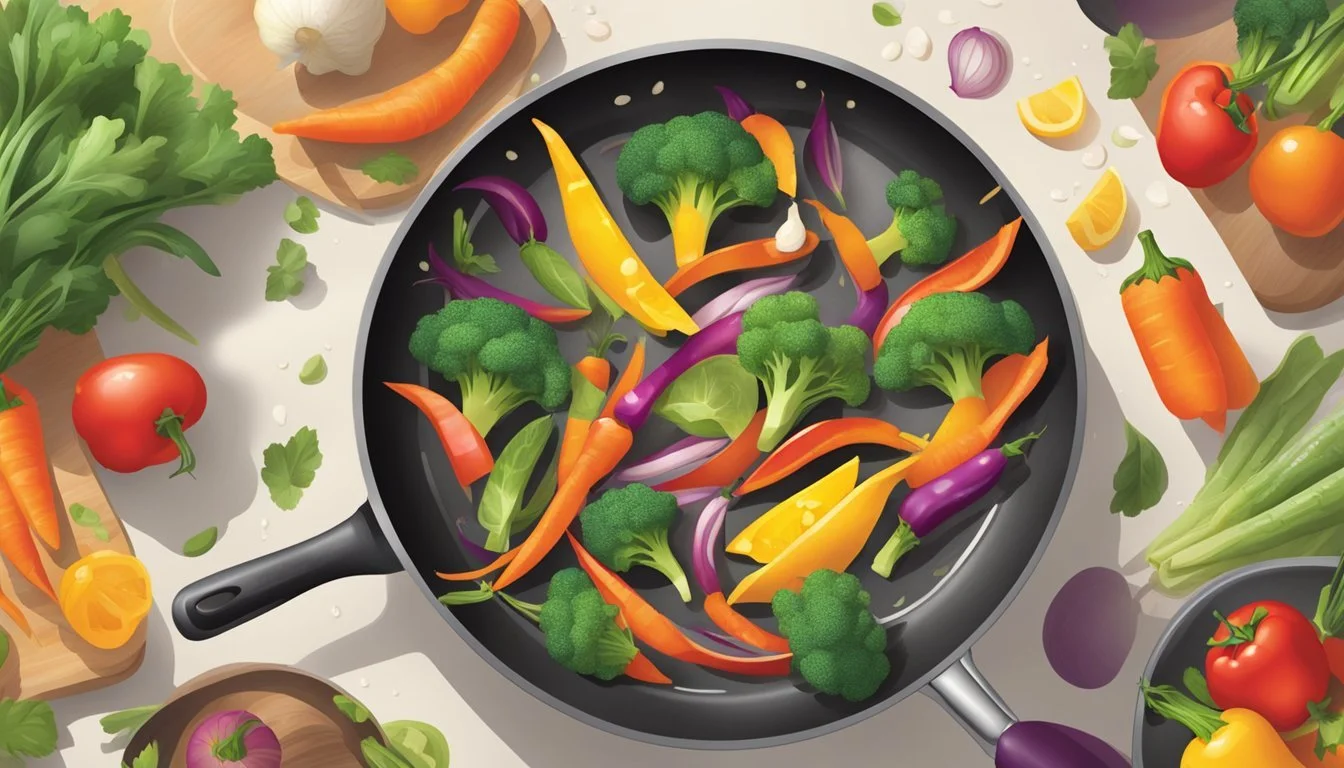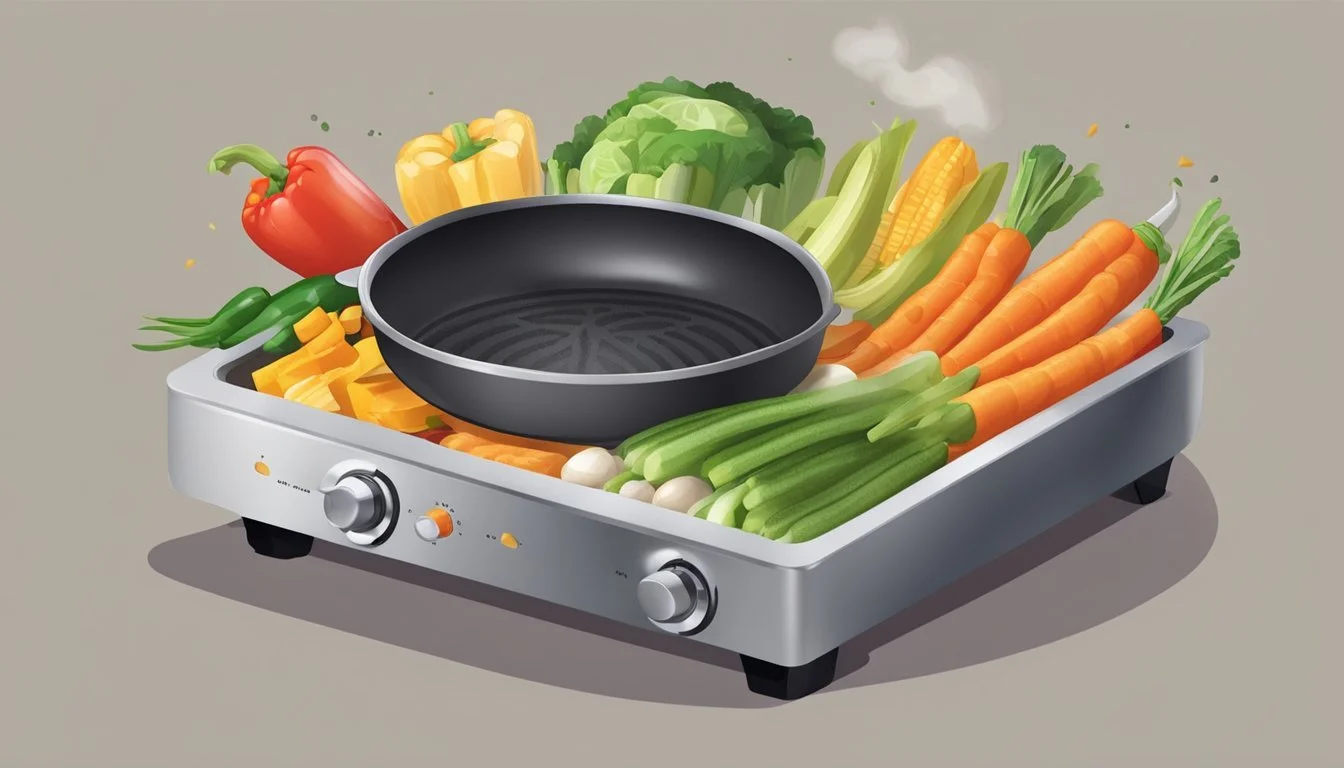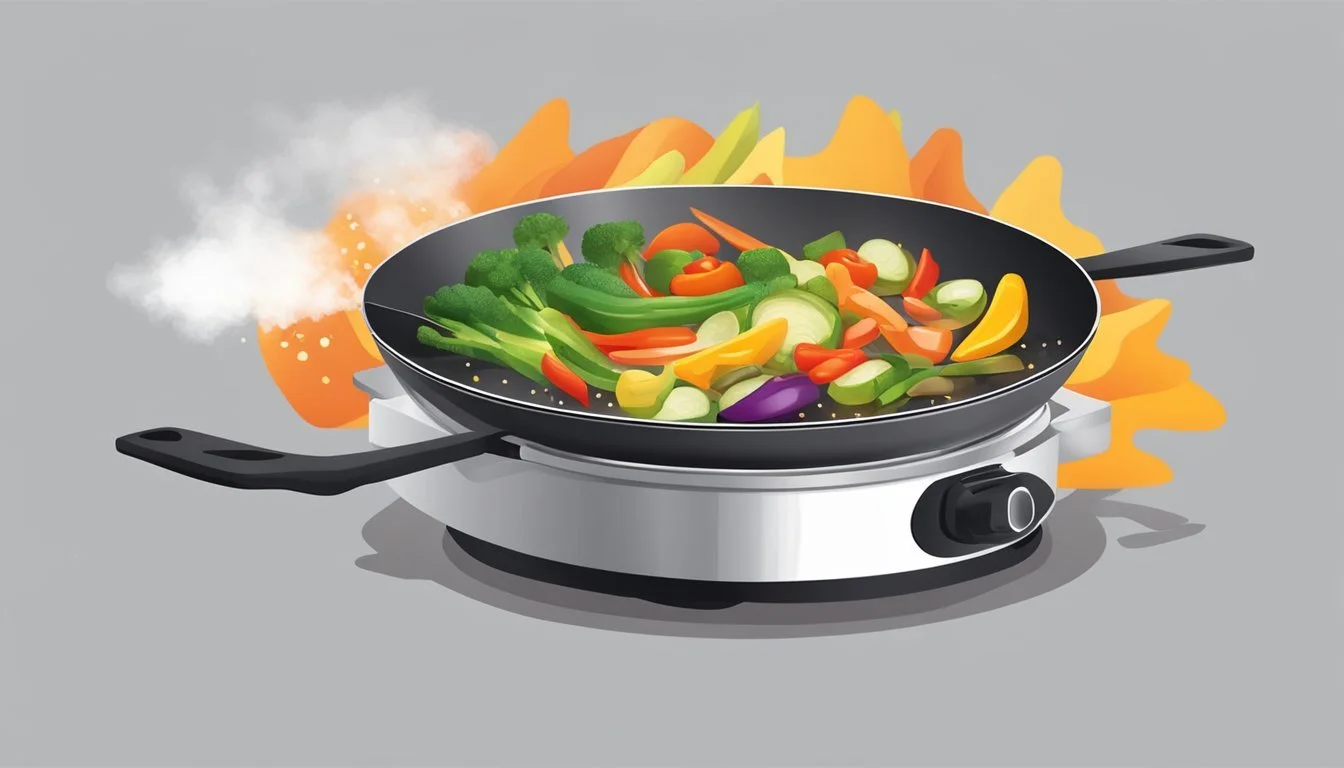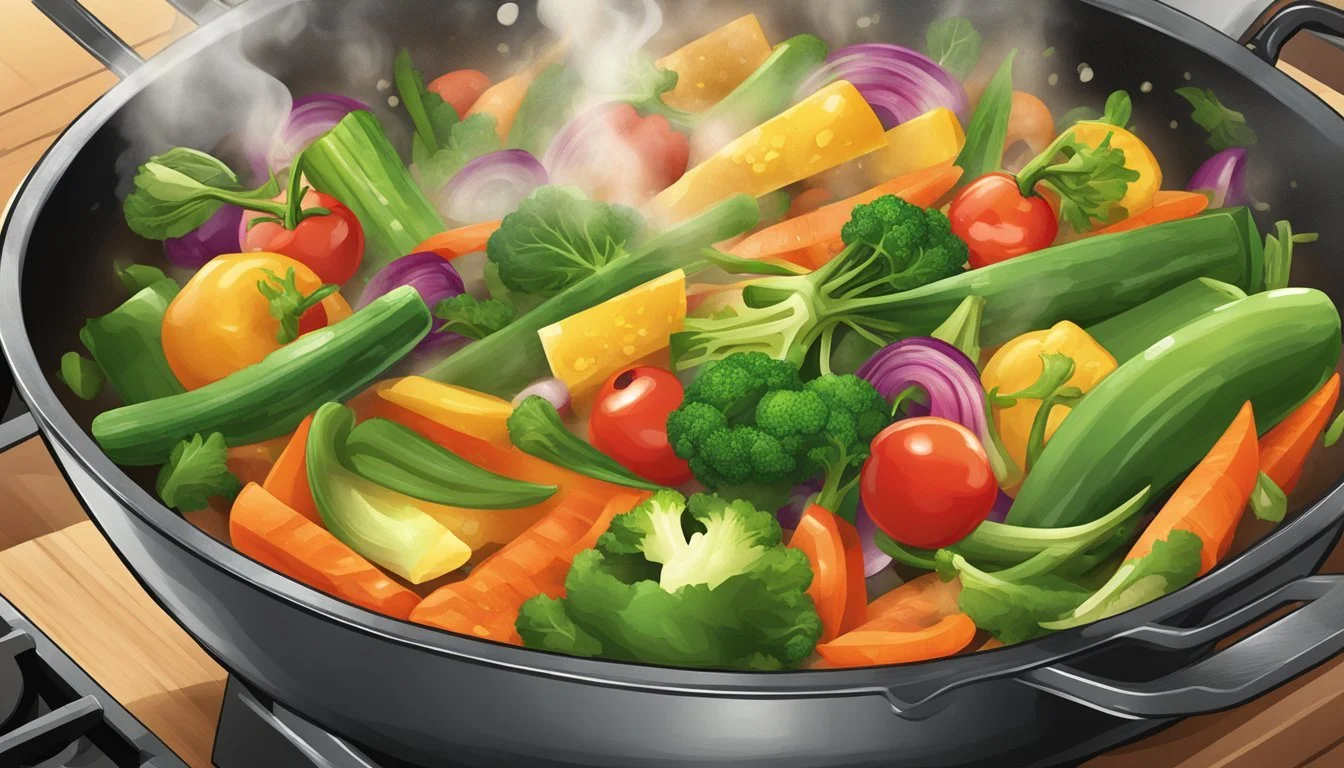Best Way to Reheat a Veggie Stir-Fry
Maintaining the Crunch
Reheating a vegetable stir-fry (What Wine Pairs Perfectly With Vegetable Stir-Fry?) without compromising its flavor and crispiness can be a culinary challenge. Stir-fries are beloved for their vibrant flavors and the delightful contrast between crunchy vegetables and tender proteins. When it comes to leftovers, the key is to restore the dish to its original glory, with each vegetable maintaining its distinct texture and the overall dish exuding the same fresh taste as when it was first cooked. Achieving this requires careful attention to the reheating method, ensuring the veggies remain crisp and the flavor is preserved.
The secret to a successfully reheated veggie stir-fry lies in avoiding common pitfalls that lead to soggy or overcooked ingredients. Utilizing the right oils, maintaining an optimal temperature, and employing the appropriate technique are all crucial steps. While the microwave might seem like a convenient option, it often yields disappointing results, turning the once-crisp vegetables into a limp and lackluster meal. Instead, select methods that reinvigorate the texture and re-emphasize the stir-fry’s characteristic tastes.
Incorporate the right reheating strategy to uphold the integrity of your stir-fry's components, offering an experience akin to enjoying it freshly made. Whether it's leveraging the stovetop's direct heat or allowing the oven's ambient warmth to gently coax the stir-fry back to life, the aim is to revive the dish without diminishing its essential qualities. Balancing speed with care ensures that each vegetable emerges from the reheating process as vibrant and toothsome as it was when the stir-fry first sizzled in the pan.
Understanding Stir-Fry Reheating Principles
When one wants to reheat a veggie stir-fry, maintaining the original flavors and textures is crucial. The key is to avoid sogginess and overcooking, which can quickly degrade the quality of the dish.
Heat: Applying the right amount of heat is essential. Too little will leave the stir-fry cold and unappetizing, while too much heat can cause overcooking. The objective is to warm the food thoroughly without compromising its texture.
High Heat: Traditionally, stir-fries are cooked quickly on high heat to give vegetables a crisp texture and to lock in flavors. While reheating, one might not use the same intense heat, but a relatively high heat setting is recommended to restore the dish's freshness.
Medium-High Heat: Reheating on medium-high heat offers a balanced approach. It's sufficient to reheat quickly while still maintaining control to prevent overcooking.
Reheating Techniques and Tips:
Skillet: Use medium-high heat with a touch of oil to prevent sticking.
Microwave: Not ideal, as it can lead to uneven heating and sogginess.
Oven: Preheat to 350°F, cover with foil to retain moisture, and heat only until warm.
To conclude, remember to reheat only until the dish reaches the desired temperature. Adding a splash of water or broth if the stir-fry seems dry can help to rehydrate the dish without making it soggy. By carefully managing the heat and reheating method, one can enjoy a veggie stir-fry that is as close to fresh as possible.
Pre-Reheating Best Practices
Proper storage and preparation are crucial steps to ensure that a veggie stir-fry retains its crunch when reheated. These two aspects help maintain the quality and texture of the ingredients.
Storing Previous Stir-Fry
To preserve the texture of leftover stir-fry, one should let it cool to room temperature before storage. It is important to store the stir-fry in an airtight container to prevent moisture loss and flavor contamination. Label and date the container before placing it in the fridge, which helps in keeping track of its freshness.
Cooling: Let stir-fry cool at room temperature, but not exceed two hours to avoid bacterial growth.
Air-Sealing: Transfer to an airtight container.
Labeling: Place a label with the date to ensure consumption while at peak quality.
Refrigerating: Store in the fridge to maintain freshness.
Prep Work Prior to Reheating
Before reheating, bring the leftover stir-fry to room temperature to allow for even heat distribution. If the stir-fry sauce had thickened during storage, one might consider adding a small amount of water or chicken broth to regain its consistency. Additionally, a touch of oil can help to bring back moisture and crispiness to the veggies during reheating. Prep work also includes removing the stir-fry from the fridge about 20 minutes before reheating and ensuring all elements are adequately separated to promote thorough warming.
Oiling: A light drizzle of oil can be added before reheating to revitalize the dish's flavors.
Loosening Sauce: If necessary, dilute thickened sauce with water or broth.
Reaching Room Temperature: Let stir-fry sit outside the fridge for a short period.
Separation: Break up any clumps to ensure heat can circulate around individual ingredients.
Reheating Methods Overview
When it comes to rejuvenating a veggie stir-fry while preserving its delightful crunch, the selected reheating method is crucial. It's important to balance the heat input and technique to maintain the vegetables' texture and to bring back the flavors as close as possible to the original dish.
Stovetop Technique
To reheat stir-fry on the stovetop, heat a pan, wok, or non-stick skillet over medium to high heat. Add a small amount of oil to prevent sticking and to help return the crispiness to the leftover vegetables and stir fry noodles. The key is to keep the food moving frequently to ensure even heating without overcooking.
Oven Method
The oven method involves preheating the oven to between 275-350 degrees Fahrenheit, then placing the leftovers on a lined baking sheet. Optionally sprinkle a bit of water to reintroduce moisture, and cover with aluminum foil for even heating. This technique provides a gentle warming process that helps maintain the textures of the stir-fry.
Microwave Strategy
Using a microwave, place the leftover stir fry in a microwave-safe dish, and cover it. The microwave strategy is fast but can unevenly heat the food and sometimes soften the vegetables too much. It's recommended to use medium power and heat in short bursts, stirring between to distribute the heat more evenly.
Air Fryer Application
An air fryer can be an excellent tool for reheating stir-fry as it circulates hot air around the food, which can help maintain crispiness. Place leftovers in the fryer basket, and adjust the appliance to a moderate temperature to avoid drying out the vegetables and noodles. This method often results in a quick and evenly reheated dish with restored texture.
Tips to Avoid Common Reheating Pitfalls
When reheating a veggie stir-fry, there are several precautions they can take to preserve the dish's texture and flavor:
Medium-High Heat: For stovetop reheating, they should use medium-high heat rather than high heat. This prevents the veggies from becoming too limp by offering a good balance between reheating swiftly and not overcooking.
Small Amount of Water: If the stir-fry seems dry, adding a small amount of water can help. Just a tablespoon or two will suffice. They should ensure to stir the veggies well so that the water is evenly distributed.
Avoid Sogginess: To combat sogginess, it's crucial not to overcover the pan. If covering is necessary, they should use a lid or cover loosely with foil for only part of the reheating time.
Reheating Process:
Preparation: They should allow the stir-fry to reach room temperature if it’s been stored in the refrigerator, which can help in even reheating.
Heating: They should heat the pan on medium-high heat before adding the veggies.
Stirring: Regular stirring is important to ensure that all the ingredients reheat at the same pace and to prevent any ingredients from sticking to the pan.
Table of Reheating Techniques:
Technique Heat Duration Notes Stovetop Medium-High 3-5 Minutes Stir often, add water if needed Microwave Medium 90 Seconds Increments Cover with a paper towel Oven 350°F 10-15 Minutes Cover dish with foil
By following these guidelines, they can enjoy their veggie stir-fry warm and flavorful without sacrificing texture.
Adjusting for Specific Ingredients
In reheating a veggie stir-fry, it is crucial to consider the individual requirements of each ingredient to maintain their ideal texture and flavor.
Vegetables and Their Textures
For vegetables such as broccoli and carrots, which are desired for their crunch, one should avoid microwaving as it can make these vegetables mushy. Instead, quickly sautéing them over high heat with a splash of chicken broth can refresh their texture without overcooking.
Broccoli: Reheat in a pan for 1-2 minutes with a small amount of broth.
Carrots: Toss in the pan for no longer than 2 minutes to maintain firmness.
Proteins and How To Handle Them
Proteins like chicken, beef, and shrimp demand careful reheating to prevent them from drying out or becoming rubbery.
Chicken: Heat gently, adding chicken broth to keep it moist.
Beef: Briefly warm in a pan over medium heat; use minimal stirring to maintain tenderness.
Shrimp: Add to the pan last as it cooks quickly and can become tough.
Tofu: Being porous, it can reabsorb flavors well; lightly pan-fry to reheat without losing texture.
Addressing Different Types of Noodles and Rice
Stir-fry noodles: Should be heated separately to avoid clumping; lightly oil and toss over medium heat.
Rice: Best refreshed in a pan with a touch of water or broth, covered, and steamed briefly to retain moisture.
By tailoring the reheating method to the particular components in your stir-fry, one can ensure each ingredient is restored as close to its original state as possible.
Creating Flavorful Stir-Fry on The Reheat
Reheating a veggie stir-fry while maintaining a burst of flavor and that desirable crunchy texture is all about technique and timing. To resurrect the zest of the dish, it's crucial to add seasonings like soy sauce or teriyaki sauce during the reheating process. However, one must exercise caution not to overpower the natural flavors of the vegetables.
For an aromatic touch, a small drizzle of sesame oil can work wonders. It should be used sparingly as its strong flavor can dominate. The key is to complement the veggies, not mask their fresh taste. Also, sesame oil has a low smoke point, making it suitable for reheating at moderate temperatures.
When adding liquids like soy sauce or teriyaki sauce, consider these points:
Use a light hand to avoid sogginess.
Incorporate stir fry sauce gradually to enrich the veggies without drenching them.
Toss rather than stir to coat evenly and maintain the vegetables' integrity.
A preparation method could be:
Heat the pan over medium heat.
Add a dash of oil and the residual stir fry sauce.
Gently fold the veggies in, layering flavors with additional seasonings.
To mitigate dryness, one can introduce a spoonful of water or broth, allowing the steam to revitalize the stir-fry. It prevents the vegetables from becoming too soft, supporting their natural crispness.
Throughout the process, one must never lose sight of the fundamental goal: to warm the dish thoroughly without compromising the freshness and texture that characterize a well-made stir-fry.
Health and Nutritional Considerations
When reheating a veggie stir-fry, it is essential to consider how heat affects its nutritional content. Vitamins, particularly water-soluble ones like vitamin C and B vitamins, are sensitive to heat. To reduce nutritional loss, one should opt for reheating methods that use minimal time and lower temperatures.
Calorie content in stir-fry is usually low, as vegetables are naturally low in calories. However, the addition of oils during the initial cooking and reheating process can increase the calorie count. It is advisable to use just enough oil to prevent sticking and not add extra during reheating to maintain the dish's low-calorie appeal.
Regarding fat, reheating should not significantly alter fat content unless additional fats like oils are used. To keep fat levels in check, individuals should reheat without adding extra fat.
The sodium content in stir-fries, often from sauces, can be of concern. Reheating does not change the sodium amount, but to avoid an overly salty dish after evaporation of sauces during the initial cook, one might need to adjust seasoning cautiously.
Sugar levels can increase if sauces containing sugar caramelize further upon reheating. Gentle reheating helps avoid this and preserves the intended balance of flavors.
Nutrient Consideration During Reheating Vitamins Use minimal reheating time Calories Avoid extra oils Fat Reheat without adding fats Sodium Season carefully Sugars Heat gently
It is important to retain as many nutrients as possible. Rapid heating methods, like microwaving with limited time, or using an oven or air fryer at a moderate temperature, can help maintain the nutritional integrity of the veggies as well as their desirable crunch.
Advanced Techniques for Stir-Fry Enthusiasts
When reheating a veggie stir-fry, enthusiasts seek methods that preserve the dish's distinct textures and flavors. They often prefer techniques that offer a fresh-tasting result as if the dish were just made. Employing the following advanced strategies ensures vegetables remain crisp and flavors, vibrant.
Quick Skillet Sauté:
Heat a wok or skillet over high heat.
Add a small amount of oil, preferably with a high smoke point like peanut oil, to coat the bottom.
Quickly sauté the stir-fry, constantly stirring to avoid overcooking any particular piece.
Aim for a brief reheat, just until everything is warmed through.
Steam Flasheating:
Arrange stir-fry in a steamer basket over boiling water.
Cover and steam for no more than a minute or two, just until hot.
Broil for a Crisp Finish:
Spread stir-fry on a baking sheet under a preheated broiler.
Broil briefly, constantly monitoring to ensure vegetables don't char excessively.
Technique Heat Level Time Notes Skillet Sauté High 2-3 minutes Stir constantly Steam Flasheating - 1-2 minutes Minimal heating time Broil Preheated 1-2 minutes Watch closely to prevent burning
For dishes like Mongolian beef where meat and veggies are integral, these methods also work well, ensuring meats like beef remain tender.
Note: Always ensure the wok or pan is not overcrowded to allow for even distribution of heat. Reheating in smaller portions may be necessary. It is vital that chefs seeking perfection in their Asian dish reheating technique employ these methods judiciously to capture the essence of a freshly made stir-fry.
Final Tips and Tricks
When reheating a veggie stir-fry, maintaining the vegetables' crunch is crucial. One should consider the type of oil used; olive oil and avocado oil are excellent choices due to their high smoke points, ensuring the veggies don't get soggy. It's best to reheat the stir-fry in a skillet over medium heat, briefly cooking it to preserve the vegetables' texture.
Incorporating sauces like low-sodium soy sauce can add flavor without overpowering the dish. However, one should add sauces sparingly during the reheating process to prevent sogginess. If the stir-fry includes a sauce thickened with cornstarch, reheating it on the stove allows for easy adjustment of its consistency, adding water or broth if necessary.
To enhance flavor, fresh ingredients such as garlic or ginger can be sautéed before adding the stir-fry to the pan. A drizzle of honey can balance the savory notes with a touch of sweetness.
Below is a summarized list of tips:
Use oils with high smoke points such as olive oil or avocado oil.
Reheat on the stove in a skillet over medium heat for a short duration.
Add low-sodium soy sauce or other sauces cautiously to avoid making the veggies soggy.
Adjust sauce thickened with cornstarch by adding more liquid if necessary.
Sauté fresh garlic or ginger for additional flavor before adding the stir-fry.
A small amount of honey can reintroduce sweetness and shine to the dish.
By following these tips, one can confidently reheat a veggie stir-fry, retaining its fresh taste and satisfying crunch.








